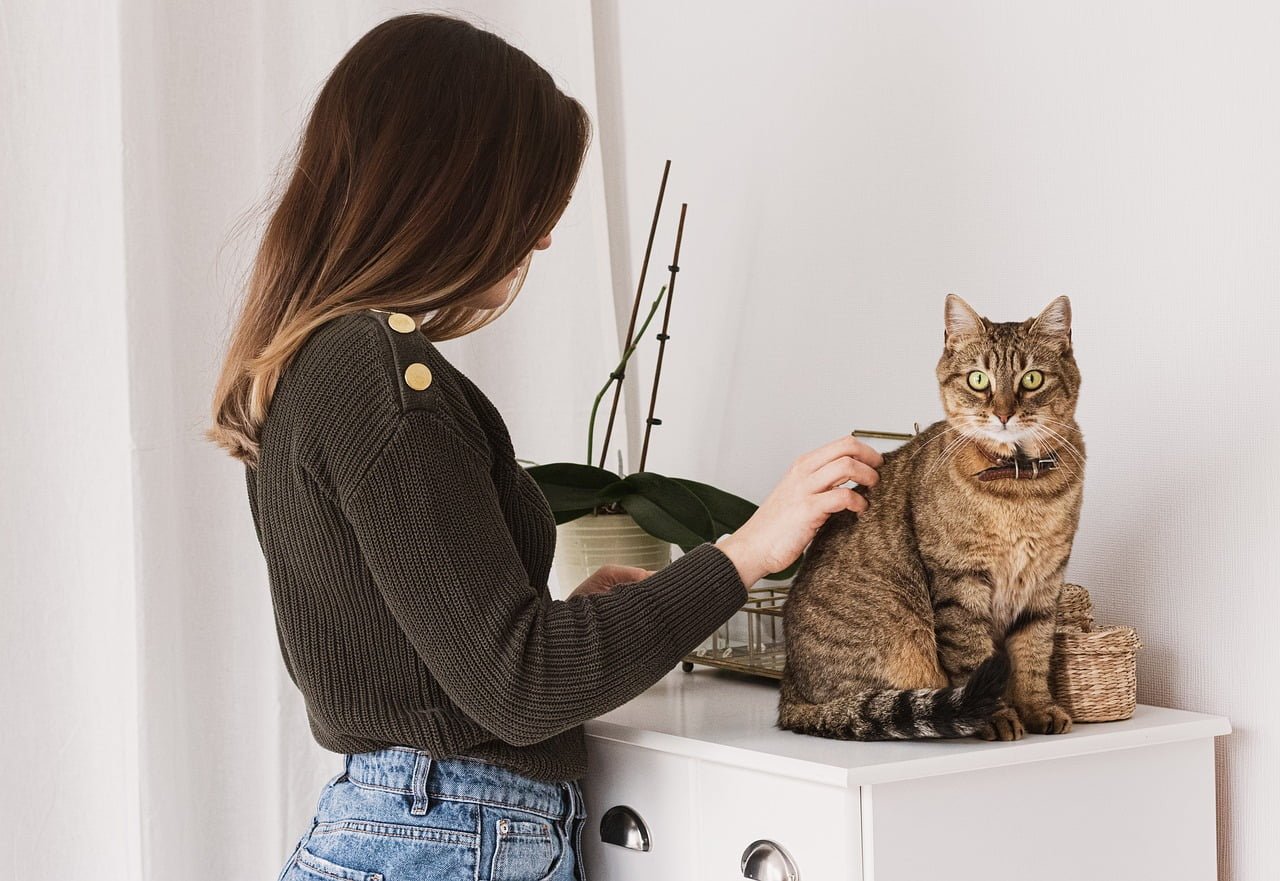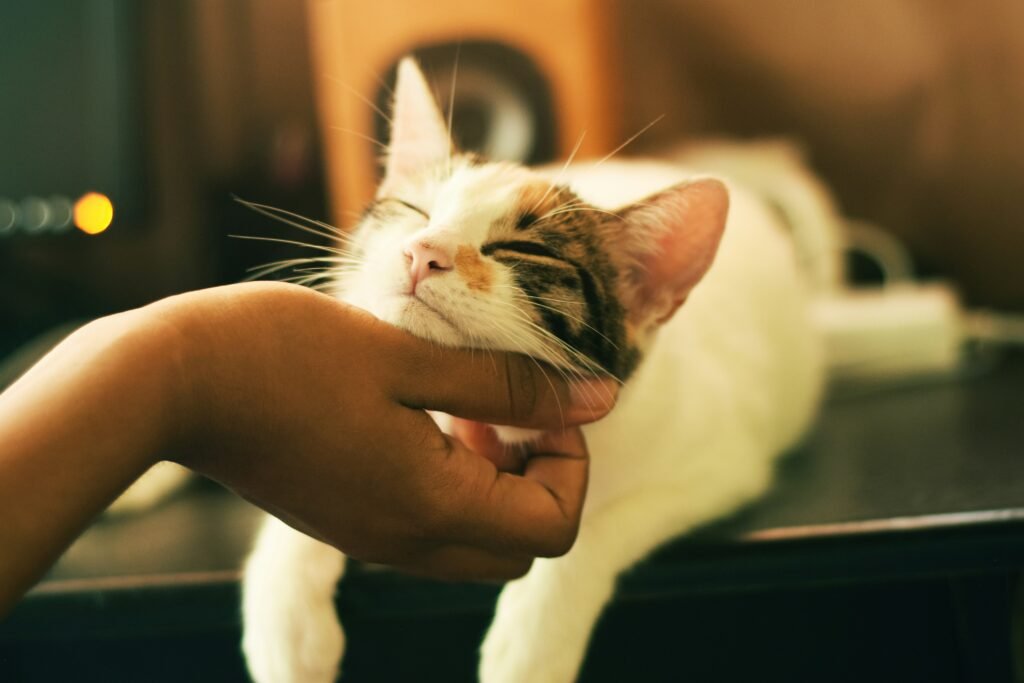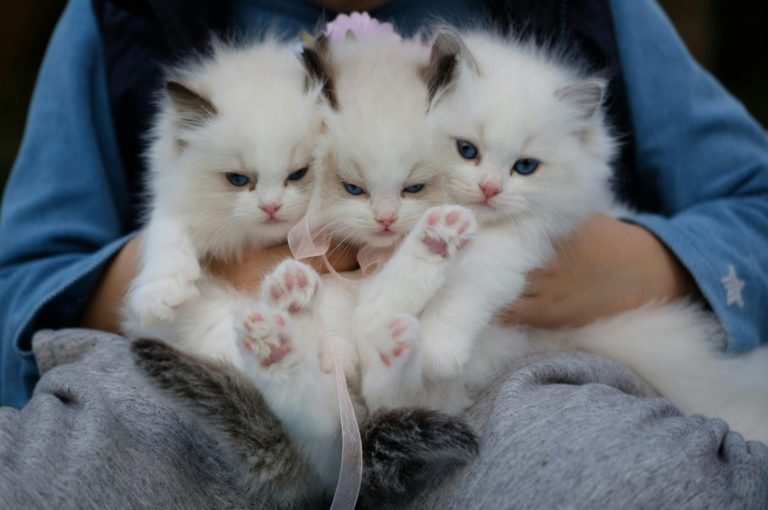
Grooming your cat at home is essential to their care routine, which helps maintain their overall health and well-being. Whether you have a short-haired or a long-haired cat, regular grooming sessions can prevent matting, reduce shedding, and keep your feline friend looking and feeling their best.
In this detailed guide, we will cover everything you need to know about how to groom your cat at home, with a special focus on grooming long-haired cats.
Why Grooming Your Cat is Important
Grooming is not just about keeping your cat looking good. It also plays a crucial role in the cat’s health. Here are some key benefits of regular grooming:
- Reduces Shedding: Regular brushing removes loose fur and reduces the hair your cat sheds around the house.
- Prevents Hairballs: By removing loose hair, you can reduce the amount your cat ingests while grooming themselves, thus decreasing the occurrence of hairballs.
- Prevents Mats and Tangles: Especially important for long-haired cats, regular grooming prevents painful mats and tangles from forming.
- Promotes Healthy Skin and Coat: Brushing helps distribute natural oils throughout your cat’s coat, keeping their skin healthy and fur shiny.
- Early Detection of Health Issues: Grooming sessions allow you to check for skin issues, parasites, or lumps that may need veterinary attention.
How to Groom Your Cat at Home
How to Groom Your Cat at Home – Preparation
Before you start grooming your cat at home, gathering the necessary tools and creating a calm environment is important. Here’s how to groom your cat at home with the right preparation:
1. Gather Your Supplies
The right tools will make the grooming process easier and more effective. Here are some essential grooming tools:
- Brushes and Combs: Choose brushes and combs suitable for your cat’s coat type. For long-haired cats, a slicker brush and a wide-toothed comb are essential.
- Nail Clippers: Cat-specific nail clippers or grinders to keep your cat’s nails trimmed.
- Ear Cleaner: A gentle, cat-specific ear cleaner to keep your cat’s ears clean.
- Toothbrush and Toothpaste: Cat-specific toothbrush and toothpaste to maintain your cat’s oral hygiene.
- Grooming Wipes or Dry Shampoo: For quick clean-ups or between baths.
2. Create a Calm Environment
Cats are sensitive creatures, and a calm environment will help make grooming a positive experience. Here are some tips:
- Choose a Quiet Space: Select a quiet room where your cat feels comfortable and has minimal distractions.
- Use a Non-Slip Surface: Groom your cat on a non-slip surface like a rubber mat or a towel to prevent them from slipping.
- Keep Sessions Short: If your cat is not used to being groomed, keep the sessions short and gradually increase as they become more comfortable.
3. Get Your Cat Used to the Tools
Before you start grooming, let your cat sniff and explore the grooming tools. This will help reduce their anxiety and make them more comfortable during the grooming process.
How to Groom a Short-Haired Cat at Home

Short-haired cats are generally easier to groom than their long-haired counterparts. Here’s a step-by-step guide on how to groom your short-haired cat at home:
Step 1: Brushing
Brushing is the cornerstone of grooming for short-haired cats. It helps remove loose fur, reduce shedding, and keep their coat healthy. Here’s how to groom your cat at home:
- Choose the Right Brush: A rubber or bristle brush works well for short-haired cats.
- Brush in the Direction of Hair Growth: Gently brush your cat in the direction of their hair growth, starting from their head and working your way down to their tail.
- Pay Attention to Sensitive Areas: Be gentle around sensitive areas like the belly and legs.
- Check for Mats and Tangles: Although less common in short-haired cats, check for any mats or tangles and gently work them out with a comb if needed.
Step 2: Nail Trimming
Regular nail trimming prevents your cat’s claws from becoming too long and sharp. Here’s how to groom your cat at home and trim your cat’s nails safely:
- Use Cat-Specific Nail Clippers: Cat nail clippers are designed to be gentle and safe for your cat’s claws.
- Press the Paw Pads: Gently press on your cat’s paw pads to extend their claws.
- Trim the Tips: Trim just the tip of the nail, avoiding the quick (the pink part inside the nail that contains blood vessels and nerves).
- Reward Your Cat: Offer treats and praise to make the experience positive for your cat.
Step 3: Ear Cleaning
Cleaning your cat’s ears helps prevent infections and keeps their ears healthy. Here’s how to groom your cat at home and clean its ears:
- Use a Cat-Specific Ear Cleaner: Apply a few drops of ear cleaner to a cotton ball or a soft cloth.
- Gently Clean the Outer Ear: Wipe the outer ear, avoiding the ear canal.
- Check for Signs of Infection: Look for signs of infection, such as redness, swelling, or a foul odor. If you notice any of these signs, contact your veterinarian.
Step 4: Dental Care
Oral hygiene is important for your cat’s overall health. Here’s how to groom your cat at home by brushing your cat’s teeth:
- Use Cat-Specific Toothpaste: Human toothpaste is unsafe for cats. Use a toothpaste specifically designed for cats.
- Introduce the Toothbrush Gradually: Let your cat sniff and lick the toothbrush before using it.
- Brush Gently: Brush your cat’s teeth in small, circular motions, focusing on the gum line.
- Start Slowly: If your cat is not used to having their teeth brushed, start with short sessions and gradually increase the time.
Step 5: Bathing
Short-haired cats generally do not require frequent baths, but occasional baths can help keep their coat clean and reduce allergens. Here’s how to groom your cat at home and bathe it:
- Use Cat-Specific Shampoo: Human shampoo can irritate your cat’s skin. Use a shampoo designed for cats.
- Use Lukewarm Water: Fill the sink or tub with lukewarm water, enough to wet your cat’s body but not too deep.
- Wet Your Cat Gently: Use a cup or a gentle spray nozzle to wet your cat, avoiding their head.
- Apply Shampoo and Rinse Thoroughly: Apply the shampoo, lather gently, and rinse thoroughly to remove all the soap.
- Dry Your Cat: Gently pat your cat dry with a towel. Some cats tolerate a blow dryer on a low setting, but many prefer to air dry in a warm, draft-free room.
How to Groom a Long-Haired Cat at Home

Long-haired cats require more frequent and thorough grooming to prevent mats and tangles. Here’s a step-by-step guide on how to groom a long-haired cat at home:
Step 1: Brushing
Brushing is especially important for long-haired cats to prevent mats and tangles. Here’s how to groom your cat at home and brush your long-haired cat:
- Choose the Right Brush: A slicker brush and a wide-toothed comb are essential for grooming long-haired cats.
- Brush Daily: To prevent mats and tangles, long-haired cats should be brushed daily.
- Brush in Sections: Divide your cat’s coat into sections and brush each section thoroughly.
- Be Gentle: Long-haired cats have sensitive skin, so be gentle to avoid causing discomfort.
Step 2: Dealing with Mats and Tangles
Mats and tangles can be painful for your cat if not addressed promptly. Here’s how to groom your cat at home and deal with them:
- Use a Mat Splitter or Dematting Tool: These tools are designed to cut through mats without hurting your cat.
- Work Slowly and Gently: Gently work the mat out, starting from the edges and working your way to the centre.
- Avoid Cutting: Never use scissors to cut mats, as you risk injuring your cat’s skin.
Step 3: Nail Trimming
Long-haired cats, like short-haired cats, need regular nail trimming. Follow the same steps outlined in the short-haired cat grooming section.
Step 4: Ear Cleaning
Ear cleaning is also important for long-haired cats. Follow the same steps as short-haired cats, checking for any signs of infection or irritation.
Step 5: Dental Care
Dental care for long-haired cats is similar to that for short-haired cats. Use cat-specific toothpaste and a toothbrush, and gradually introduce your cat to the process.
Step 6: Bathing
Long-haired cats may require more frequent baths, especially if they tend to get dirty or suffer from skin conditions. Here’s how to groom your cat at home and bathe a long-haired cat:
- Use Cat-Specific Shampoo: Choose a gentle shampoo designed for cats.
- Use Lukewarm Water: Fill the sink or tub with lukewarm water.
- Wet Your Cat Thoroughly: Use a cup or gentle spray nozzle to wet your cat’s fur completely.
- Apply Shampoo and Rinse Thoroughly: Apply the shampoo, lather gently, and rinse thoroughly to remove all soap.
- Conditioner: Consider using a cat-safe conditioner to help keep their fur manageable and reduce tangles.
- Dry Your Cat: Long-haired cats need to be dried thoroughly. Use a towel to remove as much water as possible, then use a blow dryer on a low setting if your cat tolerates it. Ensure they are completely dry to prevent mats and tangles.
How to Groom Your Cat at Home – Additional Tips and Tricks

Grooming your cat at home can be a rewarding experience, both for you and your feline friend. To make the process as smooth and enjoyable as possible, here are some additional tips on how to groom your cat at home:
1. Use Positive Reinforcement
Positive reinforcement is essential for encouraging good behavior during grooming sessions. Here’s how to incorporate it effectively:
- Offer Treats: Reward your cat with treats during and after grooming to associate the process with positive outcomes. This can help reduce anxiety and make them more cooperative.
- Praise and Petting: Use soothing words and gentle petting to reassure your cat throughout the grooming session. This can help keep them calm and relaxed.
- Toys and Playtime: Follow up grooming sessions with a favorite toy or a play session to reinforce the positive experience.
2. Be Patient and Gentle
Patience and gentleness are crucial when grooming your cat, especially if they are not used to being groomed.
- Take Breaks: If your cat becomes restless or stressed, take a break and resume the grooming session later. Short, frequent sessions are often more effective than long, stressful ones.
- Go Slow: Move slowly and deliberately, especially when handling sensitive areas like the belly, tail, and legs. Such care will help avoid startling your cat.
- Respect Their Limits: If your cat shows signs of distress or aggression, it’s important to stop and give them time to calm down. Pushing your cat too far can lead to negative associations with grooming.
3. Understand Your Cat’s Coat Type
Different coat types require different grooming techniques and tools. Understanding how to groom your cat at home according to the cat’s specific needs will help you provide the best care.
- Short-Haired Cats: Generally need less frequent grooming but still benefit from regular brushing to remove loose fur and reduce shedding.
- Long-Haired Cats: Require daily brushing to prevent mats and tangles and may need more frequent baths and conditioning treatments.
4. Regular Grooming Routine
Establishing a regular grooming routine helps keep your cat’s coat healthy and makes grooming a normal part of their life.
- Consistency: Stick to a consistent grooming schedule, whether it’s daily for long-haired cats or weekly for short-haired cats.
- Routine Health Checks: Use grooming sessions as an opportunity to check for any signs of health issues, such as lumps, bumps, or skin irritations. Early detection can lead to prompt treatment and better outcomes.
5. Handle with Care
Proper handling techniques are essential to ensure your cat’s comfort and safety during grooming. Here are a couple of pointers on how to groom your car at home with care:
- Support Your Cat: Always support your cat’s body when lifting or holding them. Avoid putting pressure on their joints or spine.
- Gentle Restraint: Use gentle restraint techniques if your cat tends to be wiggly or uncooperative. Wrapping your cat in a towel (a technique known as the “kitty burrito”) can help keep them calm and still.
6. Addressing Specific Grooming Challenges
Some cats may have specific grooming challenges that require special attention.
- Sensitive Skin: If your cat has sensitive skin, choose hypoallergenic grooming products that are free of harsh chemicals. Consult your veterinarian for recommendations.
- Fleas and Parasites: Regular grooming can help detect and prevent flea infestations. Use flea combs to check for fleas and consult your vet for appropriate flea treatments.
- Obese or Elderly Cats: Overweight or elderly cats may have difficulty grooming themselves. Regular grooming can help them maintain a clean and healthy coat.
7. Professional Help
Professional grooming services may sometimes be necessary, especially for challenging grooming tasks or if your cat has specific health issues.
- Professional Groomers: Professional groomers have the experience and tools to handle difficult grooming tasks, such as severe matting or aggressive behavior.
- Veterinarian Assistance: If your cat has medical conditions that affect grooming, your veterinarian can provide guidance and assistance. They can also recommend professional groomers who are experienced in handling cats with special needs.
8. Keep Yourself Safe
Ensuring your own safety is just as important as caring for your cat. Here is how to groom your cat at home without compromising your safety:
- Protective Gear: If your cat tends to scratch or bite, consider wearing protective gloves and long sleeves during grooming sessions.
- Know When to Stop: If you feel uncomfortable or if your cat becomes aggressive, it’s important to stop and seek professional help. Your safety and your cat’s well-being should always come first.
9. Create a Positive Grooming Environment
The environment in which you groom your cat can greatly influence their behavior and comfort level.
- Quiet and Calm: Choose a quiet, calm location for grooming sessions. Loud noises and high activity levels can increase your cat’s stress.
- Comfortable Surface: Use a non-slip mat or a soft towel to provide a comfortable surface for your cat to stand or sit on during grooming.
Conclusion
Learning how to groom your cat at home can be a rewarding bonding experience that enhances their health and well-being. By understanding your cat’s specific grooming needs, using the right tools, and incorporating positive reinforcement, you can make at-home grooming a positive and stress-free experience for both you and your feline friend.
As you master how to groom your cat at home, remember to be patient, gentle, and consistent in your approach. Don’t hesitate to seek professional help if you encounter challenges beyond your expertise. With dedication to proper at-home grooming techniques, your cat will enjoy a healthy, shiny coat and a happier life.
Regular home grooming sessions keep your cat looking great and provide opportunities to check for any health issues, strengthening the bond between you and your furry companion.



